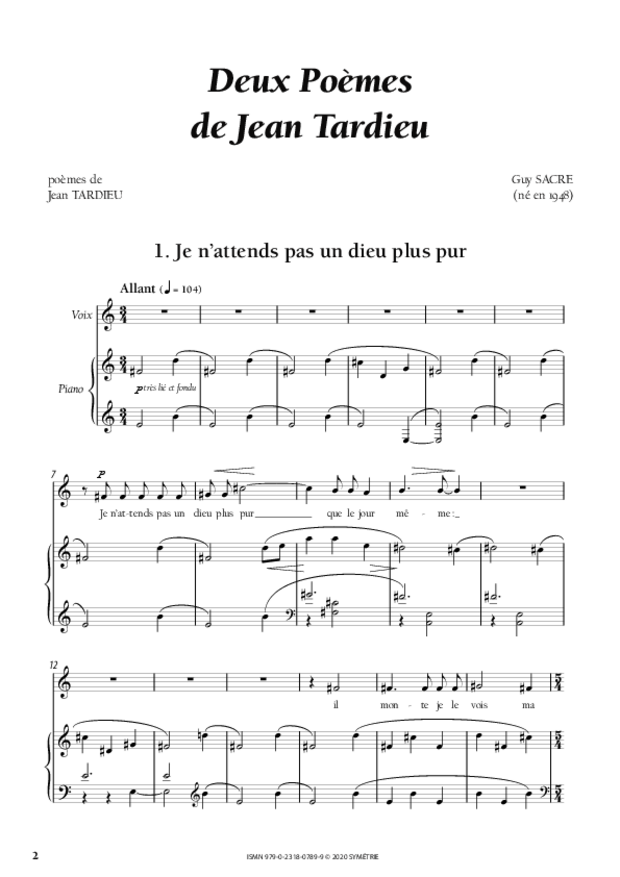The Pater Noster and the Ave Maria are written for a vocal ensemble with a minimum of 4 sopranos, 4 altos, 5 tenors and 4 basses.
Both pieces are equally suited to concert performance (grouped or separate) and to liturgical use.
As is often the case, I like to set essential texts from the Christian liturgy to music, texts that are regularly used by composers (Mass, Requiem, Stabat mater, psalms Miserere and Jubilate Deo, Magnificat).
In the Pater Noster, the prosody is inspired by the psalms measured in the antique manner by Claude Le Jeune. The composition uses long and short values, alternating between 2-beat and 3-beat rhythms. For the performance, it is important to remember that it is the dynamics of the Latin prosody that generates the rhythm, and not the opposite: the vocal flow must remain flexible to preserve the quality of the legato.
In the Ave Maria, the little notes are to be sung on the beat, precisely but without brutality.
Regarding these two pieces, we could mention illus- trious predecessors, such as Liszt and Stravinsky who were concerned with a certain simplicity adapted to the universality of the text and its suitability to the liturgy.
Dominique Vellard
(translation Hjördis Thébault)
Nomenclature
solistes et ensemble vocal









